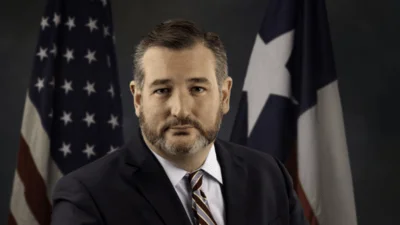The Congressional Record is a unique source of public documentation. It started in 1873, documenting nearly all the major and minor policies being discussed and debated.
“DRIVE SAFER SUNDAY” mentioning the U.S. Dept. of Transportation was published in the House of Representatives section on pages H13018-H13020 on Nov. 17, 2009.
The publication is reproduced in full below:
DRIVE SAFER SUNDAY
Mr. BISHOP of New York. Mr. Speaker, I move to suspend the rules and agree to the resolution (H. Res. 841) expressing support for designation of November 29, 2009, as ``Drive Safer Sunday''.
The Clerk read the title of the resolution.
The text of the resolution is as follows:
H. Res. 841
Whereas motor vehicle travel is the primary means of transportation in the United States;
Whereas the National Highway Traffic Safety Administration
(NHTSA) estimates that 37,313 people, or more than 100 drivers a day, were killed in motor vehicle traffic crashes in 2008;
Whereas the term ``distracted driving'' refers to anything that takes your eyes, hands, or mind away from driving, including food and beverages, traffic accidents, adjusting the radio, children, pets, objects moving in the vehicle, talking or texting on a cell phone, smoking, putting on makeup, shaving, and reading;
Whereas the NHTSA researched driver distraction with respect to both behavioral and vehicle safety countermeasures in an effort to understand and mitigate crashes associated with distracted driving;
Whereas, on September 30, 2009, the Department of Transportation (DOT) Secretary Ray LaHood announced new research findings by the NHTSA that show nearly 6,000 people died in 2008 in crashes involving a distracted or inattentive driver, and more than half a million were injured;
Whereas distracted driving was reported to have been involved in 16 percent of all fatal crashes in 2008 according to data from the Fatality Analysis Reporting System (FARS);
Whereas the age group with the greatest proportion of distracted drivers was the under-20 age group, 16 percent of all under-20 drivers in fatal crashes were reported to have been distracted while driving;
Whereas an estimated 22 percent of injury crashes were reported to have involved distracted driving, according to data from the General Estimates System (GES);
Whereas crashes in which the critical reason for the crash was attributed to the driver, approximately 18 percent involved distraction, according to the National Motor Vehicle Crash Causation Survey (NMVCCS);
Whereas during the 100-Car Naturalistic Driving Study, driver involvement in secondary tasks contributed to over 22 percent of all crashes;
Whereas everyone traveling on the roads and highways needs to drive safer to reduce deaths and injuries resulting from motor vehicle accidents;
Whereas driver behavior can be effectively changed through education and awareness; and
Whereas the Sunday after Thanksgiving is the busiest highway traffic day of the year and would be appropriate to designate as ``Drive Safer Sunday'': Now, therefore, be it
Resolved, That the House of Representatives--
(1) encourages--
(A) high schools, colleges, universities, administrators, teachers, primary schools, and secondary schools to launch campus-wide educational campaigns to urge students to be careful about safety when driving;
(B) national trucking firms to alert their drivers to be especially focused on driving safely during the heaviest traffic day of the year, and to publicize the importance of the day using Citizen's Band (CB) radios and in truck stops across the Nation;
(C) clergy to remind their members to travel safely when attending services and gatherings;
(D) law enforcement personnel to remind drivers and passengers to drive safer; and
(E) all people of the United States to use this as an opportunity to educate themselves about the dangers of distracted driving and highway safety; and
(2) supports the designation of ``Drive Safer Sunday''.
The SPEAKER pro tempore. Pursuant to the rule, the gentleman from New York (Mr. Bishop) and the gentleman from New Jersey (Mr. LoBiondo) will each control 20 minutes.
The Chair recognizes the gentleman from New York.
General Leave
Mr. BISHOP of New York. Mr. Speaker, I ask unanimous consent that all Members may have 5 legislative days within which to revise and extend their remarks and include extraneous material on H. Res. 841.
The SPEAKER pro tempore. Is there objection to the request of the gentleman from New York?
There was no objection.
Mr. BISHOP of New York. Mr. Speaker, I yield myself such time as I may consume.
Mr. Speaker, I rise in strong support of H. Res. 841, a resolution that supports the designation of November 29, 2009, as Drive Safer Sunday, and encourages the greater education and awareness of the growing dangers caused by distracted driving on the Nation's roadways. I thank the gentleman from Pennsylvania (Mr. Gerlach) for introducing this resolution ahead of the Thanksgiving holiday as part of a growing effort to combat this dangerous trend.
Improving roadway safety is a top priority of our national transportation policy. Through the coordinated efforts of the Congress, the Department of Transportation, States, local governments, and community leaders, we can--and we must--take steps to reduce the alarming numbers of fatalities on the Nation's roadways each year.
On average over the past 5 years, over 41,500 people annually have lost their lives in vehicle crashes resulting in yearly costs of $289 billion to the United States economy. Despite these startling statistics, the public has in many ways come to accept traffic fatalities as unavoidable.
Recently, a number of high-profile accidents have brought public scrutiny on the dangers of distracted driving, particularly texting while driving. This attention has led to a growing consensus that tasks that require drivers to divert attention from the road--such as dialing of a cell phone or sending text messages--undermine driver performance and must be combated.
According to the National Highway Traffic Safety Administration, in 2008, 5,870 people lost their lives and an estimated 515,000 people were injured in police-reported crashes in which at least one form of driver distraction was cited on the crash report. Driver distraction was reported to have been involved in 16 percent of all fatal crashes in 2008, increasing from 12 percent in 2004.
Addressing this troubling number of fatalities on our roadways will require a comprehensive approach to highway safety. That is why it is important during periods of above-average risk that we do everything in our power to inform the driving public about the importance of driving safety, remaining focused on the primary task at hand of operating a vehicle, and avoiding the many distractions that have caused so many unnecessary accidents.
This resolution brings much-needed awareness to the threats posed by roadway fatalities, particularly around the busy Thanksgiving holiday. With drivers from every region of the U.S. traveling for the holidays, the Sunday after Thanksgiving is one of the busiest highway traffic days of the year, and one of the deadliest as well.
During the 2008 Thanksgiving season alone, 389 passenger vehicle occupants were killed in motor vehicle accidents nationwide. This Thanksgiving we can all play a role in reducing these numbers through the commonsense recommendations in this resolution.
I again thank the gentleman from Pennsylvania (Mr. Gerlach) for highlighting this important issue, and I urge my colleagues to join me in supporting H. Res. 841.
I reserve the balance of my time.
Mr. LoBIONDO. Mr. Speaker, I rise in strong support of the resolution but at this point I would like to yield to the gentleman from Pennsylvania (Mr. Gerlach) such time as he may consume.
Mr. GERLACH. Mr. Speaker, I thank the gentleman for his support of the resolution and for yielding his time.
A special thank you to my good friend from New York (Mr. Bishop) for his leadership on this issue and also for his words this afternoon in support of this resolution, and also thanks to the chairman, Chairman Oberstar; the ranking member, Mr. Mica; the subcommittee chair, Mr. DeFazio; and subcommittee ranking member, Mr. Duncan, for their support of this resolution as well.
As my colleagues on the Transportation and Infrastructure Committee and I have heard at recent hearings, the issue of distracted driving has been gaining a lot of attention recently, and rightfully so. On September 30, 2009, Secretary Ray LaHood announced new research findings by the National Highway Traffic Safety Administration that show nearly 6,000 people died in 2008 in crashes involving a distracted or inattentive driver, and more than half a million were injured.
While the most recognized form of distracted driving is talking or texting on the cell phone, the term ``distracted driving'' actually refers to anything that takes your eyes, hands, or mind away from driving--including food and beverages, traffic accidents, adjusting the radio, children and pets in the vehicle, smoking, putting on makeup, shaving and reading--all of these behaviors need highlighting.
As my colleague from Oregon, Chairman DeFazio, said during our committee's hearing on distracted driving, ``More research needs to be done so we can fully understand the extent of this problem, but the research that has been done shows a growing consensus the tasks that require the driver to divert their eyes from the road and/or their hands from the steering wheel pose a serious distraction that undermines driver performance.''
The Department of Transportation's recent distracted driving summit put a spotlight on this issue as well. Most car accidents are caused by drivers not paying attention according to the administration.
Improving roadway safety is a top priority not only for the Transportation and Infrastructure Committee but the House of Representatives as well. While we are still in the formative stages of establishing a Federal legislative policy consensus, it is important that we do not delay in deploying important educational and awareness outreach efforts, and this resolution attempts to do just that.
This resolution, which we have called the Drive Safer Sunday resolution, simply designates November 29, the Sunday after Thanksgiving and the busiest highway traffic day of the year, as Drive Safer Sunday and encourages all people in the country to use this as an opportunity to educate themselves and others about the dangers of distracted driving and highway safety. This resolution would encourage schools, trucking firms, clergy, and law enforcement to launch educational campaigns to urge students, members, and citizens to be careful about safety and driving.
Motor vehicle travel is the primary means of travel in the United States, and the administration estimates that 37,315 people--or more than 100 drivers a day--were killed in motor vehicle crashes in 2008. As we approach the busiest traffic day of the year, everyone traveling on the roads and highways needs to be aware of the risks associated with distracted driving and drive safer to reduce deaths and injuries resulting from motor vehicle accidents.
This resolution is a reminder of the personal responsibility each driver accepts every time they put their key in the ignition, and we can all do little things to make the roads safer and be more considerate of the other motorists.
I thank the gentleman from New York (Mr. Bishop) for his kind support of this resolution.
{time} 1300
Mr. BISHOP of New York. Mr. Speaker, I yield such time as he may consume to the chairman of the Transportation Committee, the gentleman from Minnesota (Mr. Oberstar).
Mr. OBERSTAR. Mr. Speaker, I thank the gentleman for yielding.
I want to thank Mr. Bishop for his leadership on this issue, but especially the gentleman from Pennsylvania (Mr. Gerlach) who had the foresight and the tenacity of concern to draft this resolution and call national attention to the subject of safe driving, particularly on this busiest travel weekend of the year, the Thanksgiving holiday time.
It is particularly poignant to me as nearly every year our daughter, Noelle; her husband, Todd; granddaughters, Emma, Lily, and Coryn, drive from Kenosha, Wisconsin, to Washington for Thanksgiving and back, 13-
plus hours on the road. This year they are flying. My daughter Corrine and her husband, Steve, will come down from Pennsylvania near Mr. Gerlach's district and drive back, and it always bothers me there is so much traffic in the I-95 corridor which is so heavily traveled.
It takes me back to the beginning of the interstate highway system, the driving force behind the interstate. Far more than congestion on the Nation's roadways, movement of goods and people, was the prospect in 1955, the rising number of highway fatalities, that if we didn't do something, in less than a decade, more than 100,000 people would be dying on the Nation's roadways.
My predecessor, John Blatnik, who was one of the five coauthors of the interstate highway system, told me repeatedly when I was his administrative assistant that that was the driving force, the fear that we would continue to have carnage on the Nation's roadways, that drove the Congress, that pushed the Eisenhower administration to taking action to revive the study initiated under then-President Roosevelt just before the end of World War II that resulted in a recommendation of a 44,000-mile highway network for the continental United States.
Eisenhower then designated General Lucius Clay to resurrect that study. The Clay Commission came back and reported what became the National System of Interstate and Defense Highways.
Fatalities were in the range of 55,000 a year. We brought that down over 50 years to 43,000. Half of those are related to alcohol. Half of the fatal accidents are urban residents driving on rural roads not accustomed to obstructed line of sight, to blind intersections, to ground fog, to whiteouts at intersections during winter months. So half of the fatalities occur in rural areas. Half of those who die in rural areas are from urban centers.
We are all engaged together in the need for a safer driving environment. It was bad enough to have alcohol and drug abuse, but now distracted driving.
Mr. Bishop referenced the Secretary's summit, as did Mr. Gerlach, on distracted driving just a few weeks ago. The Secretary is on his way to a conference in Moscow on safe driving. He left yesterday to lead the way among industrialized nations of the world to develop better information and take stronger action to improve safety on our roadways.
The European Commission, in 5 years, has reduced their highway fatality from 55,000 a year to 43,000 in just 5 years. A centerpiece of their action in the European Transport Ministry was to ban cell phone use. In Portugal, it is a crime to use a cell phone while driving. Whether you are involved in an accident or not, traffic police are authorized to arrest persons who can then be prosecuted as criminals for using cell phones while driving. The European community is serious about this, and we need to get serious as well.
This resolution will move us into a greater awareness, a broader general awareness of the need for improved attention to safety.
Our transportation bill that has been reported from subcommittee and ready to come to the House floor will double the investment, over 6 years, in highway safety to $12-plus billion over 6 years. That is what we need to do. We have funding for awareness programs and we have funding for increased driver training and driver education responsibility and more truck safety. There are a whole range of initiatives that need to be undertaken and need to be funded. We need a 6-year transportation bill to do that. This administration needs to get on board with us, not spend the next year dithering about what kind of bill we need to have. We have got the bill. We have the ideas. We have the initiatives and the public support. We need to move ahead with this bill.
Thank heavens for this resolution that will increase public awareness in this very critical time of year. Many millions of our fellow citizens take to the highways. They need to take to the highways safely and come home safely.
Mr. LoBIONDO. Mr. Speaker, again I rise in strong support of the resolution and remind my colleagues that during this holiday season we have an opportunity to help remind drivers of the harmful consequences of distracted driving and that harmful consequence on loved ones and others. So I encourage all Members of Congress to join me in supporting this resolution.
I would like to insert into the Congressional Record correspondence received from the AAA organization.
Triple A,
Washington, DC, November 2, 2009.Hon. Jim Gerlach,House of Representatives,Washington, DC.
Dear Congressman Gerlach: AAA supports your resolution on distracted driving, H. Res. 841, to designate November 29, 2009, as ``Drive Safer Sunday.'' Your effort is in line with our own work to raise public awareness of the dangers posed by distracted driving.
Recently, AAA and the AAA Foundation for Traffic Safety encouraged all drivers to participate in ``Heads Up Driving Week'' from October 5-11. We asked drivers to take a first step toward driving distraction-free by trying it for one week, and then continuing that good habit for life. Drivers were urged to sign a pledge committing to distraction-free driving, and were provided 10 tips on how to eliminate distractions from their daily travel. For your information, I am enclosing the 10 tips that support the campaign.
AAA has also launched a state legislative campaign to pass laws banning text messaging while driving in all 50 states by 2013. Enacting texting while driving bans is an important step in reducing the incidence of this dangerous practice among motorists nationwide. We'll also continue our work through public education, driver training, and other safety programs to discourage motorists from engaging in the broad range of distractions that tempt them while behind the wheel.
AAA and a number of other safety groups recently sent a letter urging Congress to take a comprehensive approach to the issue of distracted driving. We urge Congress to support funding for research, data collection, public education, law enforcement and roadway countermeasures.
We support your goal of drawing public attention to the dangers of distracted driving and the importance of traffic safety. Thank you for your leadership on this important issue.
Sincerely,
Jill Ingrassia,
Managing Director, Government Relations
and Traffic Safety Advocacy.
AAA 10 Tips To Minimize Distracted Driving
AAA and the AAA Foundation for Traffic Safety will be asking motorists to participate by making Heads Up Driving Week a distraction-free week of driving.
Using a cell phone, text messaging, or emailing are just some of many possible distractions that divert drivers' attention. Eating, talking with passengers, reading maps or the newspaper, writing, personal grooming, and looking at things outside the vehicle are among countless activities that could create a substantial crash risk.
Below are 10 quick and easy ways drivers can minimize distractions.
1. Plan Ahead. Read maps and check traffic conditions before you get on the road.
2. Stow Electronic Devices. Turn off your phone before you drive so you won't be tempted to use it while on the road. Pull over to a safe place to talk on the phone or to send and receive text messages or emails.
3. Prepare Kids and Pets for the Trip. Get the kids safely buckled in and situated with snacks and entertainment before you start driving. If they need additional attention during the trip, pull off the road safely to care for them. Similarly, prepare and secure pets appropriately in your vehicle before getting underway.
4. Satisfy that Craving Off the Road. Eat meals and snacks before getting behind the wheel, or stop to eat and take a break if driving long-distance.
5. Store Loose Gear and Possessions. Stash away loose objects that could roll around and take your attention away from driving.
6. Get Your Vehicle Road-Ready. Adjust seat positions, climate controls, sound systems and other devices before you leave or while your vehicle is stopped. Make sure your headlights are spotless so you can see everything on the road and every other driver can see you better.
7. Dress for Success Before You Get in the Car. Your car isn't a dressing room. Brush your hair, shave, put on make-up, and tie your necktie before you leave or once you reach your destination.
8. Get Your Brain in the Game. Focus on the task at hand--driving safely. Scan the road, use mirrors and practice commentary driving, identifying orally events and conditions you may have to react to. Really focusing on maintaining your thoughts about the road, when you're on the road, can help enhance your engagement, your overall awareness and behavior as a driver, and help you see the importance of ``being in the game.''
9. Evaluate Your Own Behavior From the Other Side of the Road. When you're on the road as a passenger or a pedestrian, take a look around and honestly evaluate whether you might have some of the same driving behaviors as those who you're a little worried about as a passenger or pedestrian.
10. Enlist Passengers. Ask a passenger to help you with activities that may be distracting.
These tips and further information about distracted driving are available at www.AAAFoundation.org/HeadsUp.
I yield back the balance of my time.
Mr. BISHOP of New York. Mr. Speaker, let me just close by thanking the gentleman from Pennsylvania (Mr. Gerlach) for his leadership on this issue. Let me also thank the chairman of the committee, Mr. Oberstar, for moving this resolution through the committee so rapidly and bringing it to the floor so quickly. Let me also echo the chairman's comments with respect to the urgency and the desirability of passing a robust reauthorization of the highway transportation bill as quickly as we possibly can.
I yield back the balance of my time.
The SPEAKER pro tempore. The question is on the motion offered by the gentleman from New York (Mr. Bishop) that the House suspend the rules and agree to the resolution, H. Res. 841.
The question was taken.
The SPEAKER pro tempore. In the opinion of the Chair, two-thirds being in the affirmative, the ayes have it.
Mr. BISHOP of New York. Mr. Speaker, on that I demand the yeas and nays.
The yeas and nays were ordered.
The SPEAKER pro tempore. Pursuant to clause 8 of rule XX and the Chair's prior announcement, further proceedings on this motion will be postponed.
____________________








